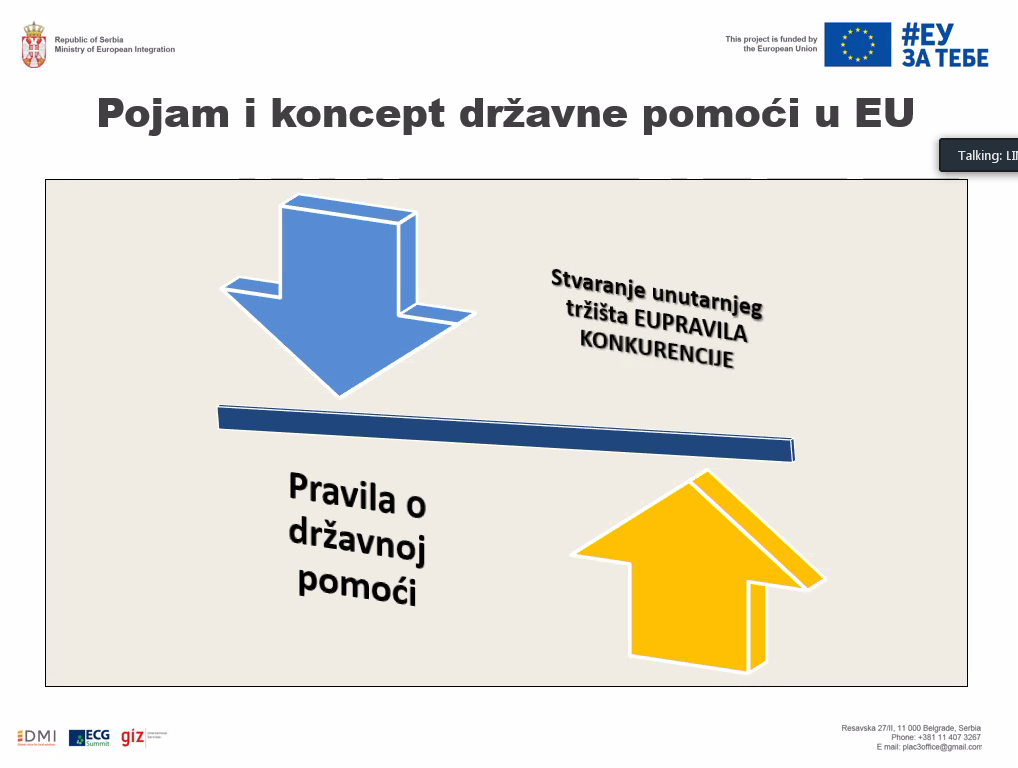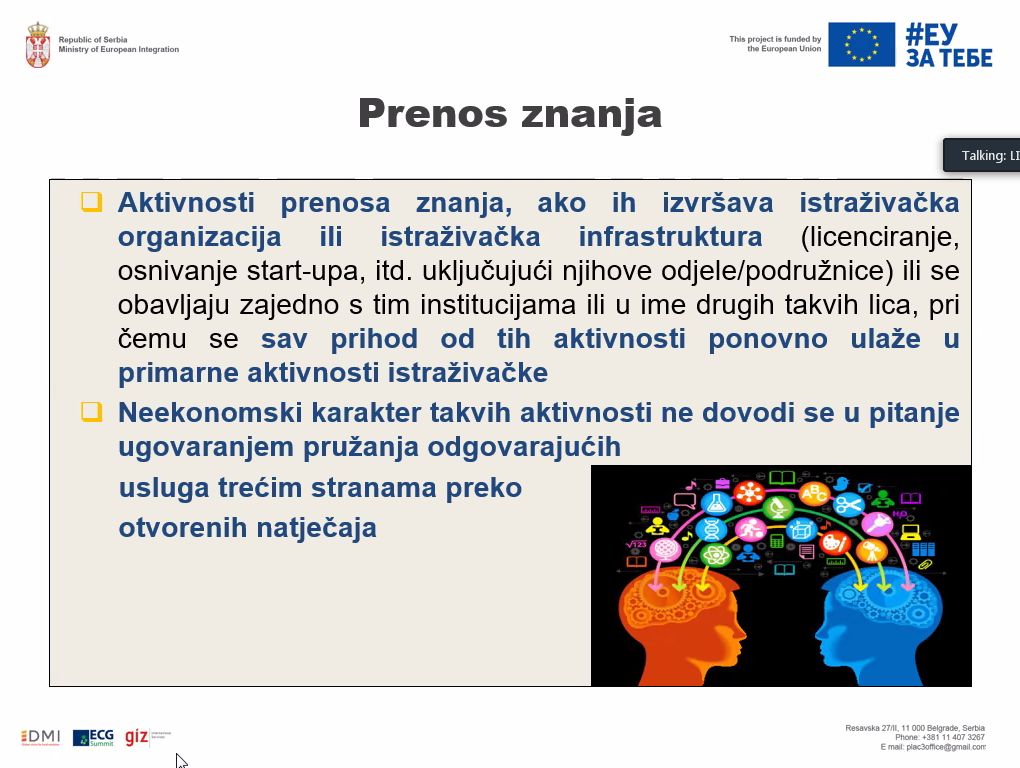Harmonisation of state aid rules for research and development and innovation
As part of the activities in areas covered by the Negotiating Chapter 8, the PLAC III project has provided support to the Commission for State Aid Control in harmonising state aid schemes in the fields of research and development and innovation with EU rules. The support included an analysis of the existing state aid schemes in Serbia, a comparative analysis with the state aid for research, development and innovation in the EU, as well as recommendations for harmonisation.
Project expert Olgica Spevec presented the results of the work - a proposal of Guidelines for further harmonisation of state aid schemes in research and development and innovation with EU rules at the workshop held on March 2, 2022 for members of the State Aid Control Commission
Spevec presented the Community framework for State aid for research and development and innovation; she also introduced new types of state aid tat have been in force since August 2021, as an addition to financing certain activities from the Horizon 2020 and Horizon Europe programmes. This is made possible by the amendments to Regulation 651/2014 declaring certain categories of aid compatible with the internal market in application of Articles 107 and 108.
State aid for research and development and innovation in the EU may be granted on the basis of paragraph 3 of Article107 of the Treaty on the Functioning of the EU as State aid to facilitate the development of certain economic activities in the Union.
In Serbia, the conditions and criteria
for the harmonization of state aid for research and development and innovation
are contained in the Regultion on the conditions and criteria for the
harmonisation of horizontal state aid. The Law on Innovation Activities
envisages the establishment of economic incentive measures for the subjects of
the innovation system and stimulating procedures and procedures in favour of
those subjects by the competent authorities, the autonomous province, local
self-government and legal entities managing public funds, which is the legal
basis for state aid.
The proposed Guidelines on further harmonisation on state aid schemes include a recommendation to separate the economic and non-economic activities of research organizations and higher education institutions, their costs, funding and revenues. Also to prevent cross-subsidization of economic activity from public funds intended for the performance of their basic non-economic activity. The Science Fund should establish a system by which it clearly regulates its activities in situations when it is a provider of state aid, a mediator in the allocation of public funds and state aid and a recipient of state aid.




